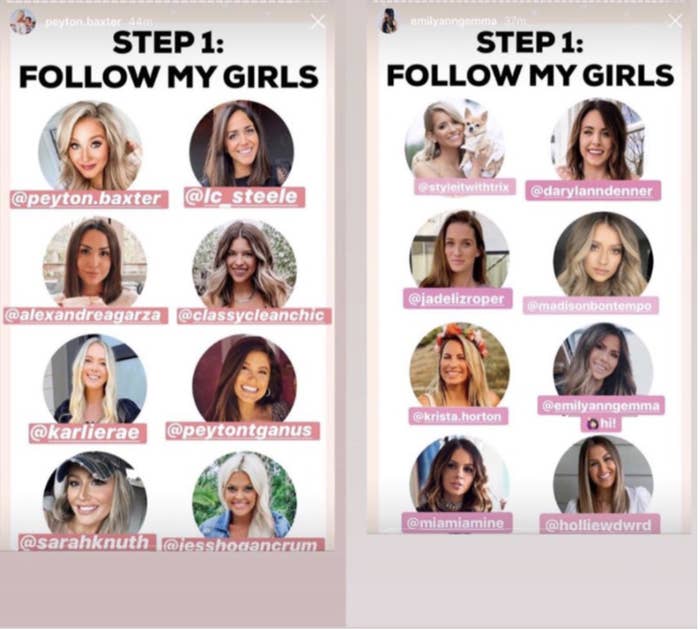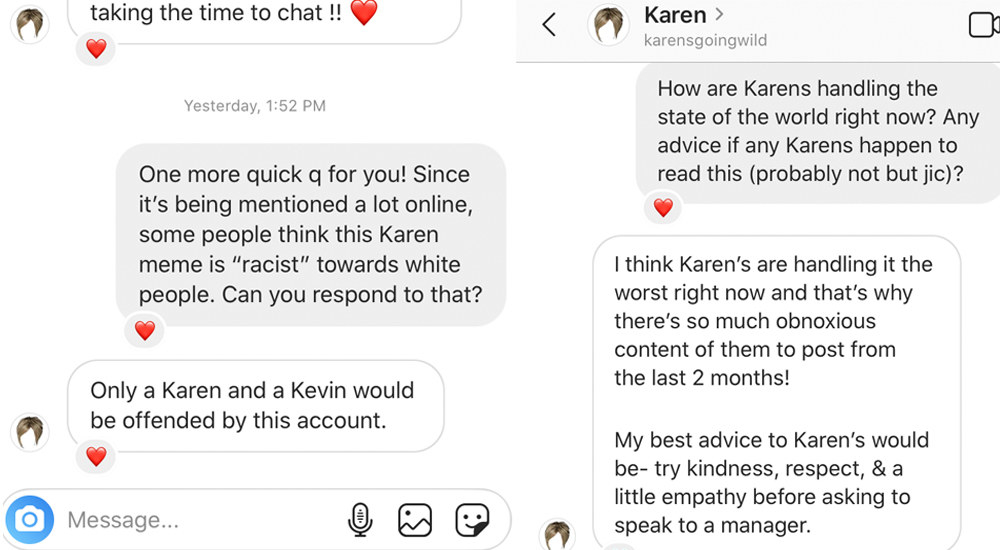This is Please Like Me, BuzzFeed News’ newsletter about how influencers are battling for your attention. You can sign up here.
Controversial loop giveaways on Instagram have some things in common with MLMs

I have written extensively in this newsletter and in stories about the rise of loop giveaways on Instagram, and why they are so controversial. This week, the issue boiled over.
A group of influencers announced they were hosting a loop giveaway for a car, sparking immediate backlash and a ton of questions. I reached out to Instagram, and a spokesperson told me these types of giveaways are against its policy and that the company was investigating. You can read about it here or on my Instagram, where I detailed my reporting.
As I reported this out, I got messages from a few people who said these giveaways reminded them of MLMs, or multilevel marketing companies. I think this is a rather apt comparison for a few key reasons.
First, many of these loop giveaways require some sort of buy-in, whether it's paying a fee to a third party that organizes the giveaway or splitting the cost of the prize with the other influencers involved. For example, influencers involved in a recent Peloton giveaway told me they split the cost of the prize, four bikes that cost more than $2,000 each, among themselves.
This aspect of the giveaways shares an important detail with MLMs: People are paying money upfront to buy into a dream with no guarantee of success. In an MLM, the participants are paying hundreds or thousands of dollars with the hope this will lead to them being able to run their own, revenue-generating business. In a loop giveaway, people are paying hundreds or thousands of dollars with the hope that this will lead them to get more followers, which will lead to better sponsorships and ad deals.
In both these circumstances, the person who already has the most money starts out with a huge advantage. Take for instance, LuLaRoe, which I did a big feature story on earlier this year. To join LuLaRoe, you need to pay a minimum of around $5,000 for a starter kit, but former sellers I spoke to told me in actuality many people paid sometimes double or even triple that amount to join and build their inventory. It makes sense that spending more money on LuLaRoe upfront would lead to greater success down the road, as customers naturally will flock to sellers who have the most variety in size and style of clothing. Sellers who can only afford to spend the minimum amount to join are therefore at a disadvantage from day one.
An influencer already has a huge advantage if they can spend thousands of dollars every month joining multiple loop giveaways and build their following quickly. I have seen some influencers who take part in three or four — sometimes even more — giveaways at a time. Influencers who can only afford to join maybe one giveaway, or don’t have enough extra income to join at all, grow much slower and don’t get the same opportunities.
In both of these cases, the person who is able to buy their way into bigger and bigger success is then peddled around as a model for others to see what is possible, leading them to sink even more and more funds into playing the game. Some influencers with huge accounts can even leverage their “success” into making money off those who want to be like them by working with third-party companies like Social Stance, which is widely believed to pay big influencers to host these large loop giveaways and charge smaller influencers to join. There’s also the possibility that, like in MLMs, participants who are making a significant amount of revenue through bigger ad deals gained through these giveaways aren’t actually seeing their bottom line grow if they continue to reinvest said profits into more, and bigger, loop giveaways.
All these facts are pretty depressing and show why loop giveaways are giving influencers a bad reputation right now. However, the one crucial difference between these giveaways and MLMs is an encouraging one. Becoming an influencer, unlike joining an MLM, is an actual real business opportunity — and if you do it right, an extremely lucrative one. Influencers who build their followings through slow and steady hard work over time are thriving, and the market is open for anyone to join. You just can’t cut corners.
There are also encouraging signs that advertisers are catching on. Many industry blogs have encouraged businesses to look at an influencer’s engagement rate, rather than their follower count, when seeking partners for ad deals. A 2019 study found that engagement actually increases if an influencer has fewer followers, because their audience tends to be more loyal and actually willing to buy things the influencer recommends. In other words, paying your way into higher follower counts may soon become way less profitable.
So while some influencers may be trying to get ahead by using tricks that remind me of MLMs, the industry will hopefully soon self-correct to get rid of these shady elements. While it is frustrating to see these tactics on Instagram, a platform I personally believe in and love, it is only one part of the overall economy for influencers. Unlike in an MLM, if you work hard, don’t cheat, and stay true to your brand as an influencer, you can actually succeed. And I think that’s something worth rooting for.
—Stephanie
@karensgoingwild has grown an Instagram following at a wildly rapid rate
Karens have been causing chaos for decades, and they’ve long been a meme. But during the coronavirus crisis Karens have been upping the ante and memes about them have become popular again. They are a welcome distraction for frustrated Americans who are trying to comply with safety regulations.
This explains the enthusiasm for a new Instagram page called @karensgoingwild, which has grown to 1.9 million followers since it was created last Friday. Riley Beek, a 25-year-old from Newport Beach who runs this and another popular meme account full-time, told me she believes her page of “obnoxious content” is a “mental escape from everything that’s happening in the world” right now.
Riley posts an average of 25 times a day because she said she’s noticed an increase in Instagram meme activity overall and people are asking her for more. Her content includes both jokes about the “Karen” archetype and actual women who are caught on film defying orders, threatening to call the police for petty purposes, or doing other Karen activities. Here’s one of a Karen filming her woes and complaining about not being able to breathe while wearing a cloth mask.
“It’s comedic relief intended to make people laugh…and temporarily forget their troubles,” Riley said. “Karen memes have been getting more and more popular.”
Riley said she’s also noticed that she’s seen a “huge increase in engagement” over the past few weeks, but specifically late at night between 1 a.m. and 3 a.m.
“Not only is everyone at home doing nothing but their sleep schedules are messed up,” she added.
The @karensgoingwild page is not a happy accident, of course, as Riley is a pro in the meme industry. Riley, her partner, and a friend also run another major meme account called @Memequeen, which has over 6 million followers. She began cross-promoting her Karen content on that account last week, which helped introduce people to the new page, and its growth skyrocketed. She’s now receiving “tons and tons” of user submissions.
Riley and I DMed for a while about the ridiculousness of the content she’s received and posted. It’s often maddening, but it’s also cathartic for all of us who’ve observed at least one Karen in the wild.
“Karens are handling [the pandemic] the worst,” Riley said.
She also has some words of advice for anyone who lives with a Karen, or is a Karen. And no — she doesn’t think making fun of entitled Karens is problematic.

Since this is an ~influencer~ newsletter, I asked her where she thinks meme pages fall within the industry.
“I like to think we influence people to connect and stay in touch by sharing the funny, relatable content we post. I don’t think ‘influencing’ solely has to be about promoting a product. Our goal as a meme page is to influence our audience to not take life so seriously,” said Riley.
In addition to her meme pages, Riley, her fiancé, and a friend have created two different apps, one for sleep meditation and another to encourage teens to quit vaping. She said almost all the users on these apps have come from promotions on their original meme page. And they’re not immune to some Fashion Nova shilling every once in a while. A meme page is a business, apparently one that funds these three adults’ full-time salaries. But, hey, if they’re making money off Karens wreaking havoc everywhere, and they’re properly sourcing their materials, I guess I’m not totally mad at it.
—Tanya

